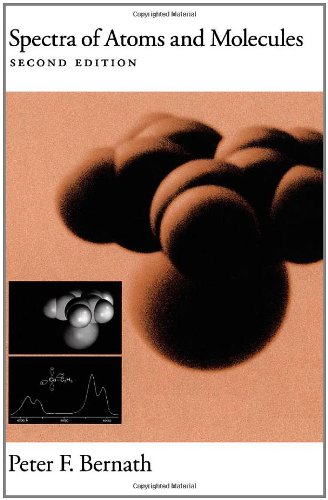Spectra of Atoms and Molecules pdf
Par sciortino shaun le mercredi, avril 27 2016, 21:27 - Lien permanent
Spectra of Atoms and Molecules. Peter F. Bernath

Spectra.of.Atoms.and.Molecules.pdf
ISBN: 0195075986,9780195075984 | 405 pages | 11 Mb

Spectra of Atoms and Molecules Peter F. Bernath
Publisher: Oxford University Press
A lot of different atomic and molecular lines are listed for each star, but I want to start getting into M dwarf stuff. Carbon is one of the most abundant atoms in space and scientists believe that the spectral changes across these maps trace the molecular evolution of carbon across the universe. Spectra of Atoms and Molecules, 2nd Edition is designed to introduce advanced undergraduates and new graduate students to the vast field of spectroscopy. In Raman spectroscopy, particles of light, or photons, from a laser hit molecules that are already vibrating at a certain frequency. Aerosols in this lower haze have been studied using "We subtracted from the observed spectra the signal caused by methane, which is very strong because this molecule is quite abundant in Titan's atmosphere. Absorption spectrum is characteristic for a given molecule or an atom. Spectroscopy is the study of matter and how electromagnetic radiation interacts with it. All molecules and atoms absorb, as well as emit, light at varying wavelengths. Therefore, it can be used in identifying or confirming the identity of a particular species. A group led by Structural identification techniques such as mass spectrometry and nuclear magnetic resonance spectroscopy sometimes fail, such as when all of the products have the same mass and NMR spectra of product mixtures have overlapping peaks that are hard to resolve. Spectral interferences are caused by presence of another atomic absorption line or a molecular absorbance band close to the spectral line of element of interest. Notice that the first four spectra (from bottom to top) look pretty curvy, bumps and dips aside. High-resolution atomic force microscopy (AFM) has been extended to a new application—taking before and after pictures of individual molecules as they undergo a chemical reaction. The Basics of Spectroscopy in Astronomy. These reactions eventually lead to the production of carbon-based aerosols, large aggregates of atoms and molecules that are found in the lower layers of the haze that enshrouds Titan, well below 500 km.